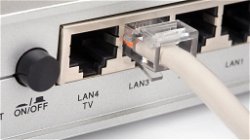Network Programming: Connecting the Digital World
James Bond
. 2 min read
Network programming is a fundamental aspect of modern computer science, enabling communication between devices and systems over the internet or local networks. It forms the backbone of our interconnected world, facilitating data transfer, remote access, collaboration, and even video chat across the globe. In this article, we will explore the key concepts, protocols, and tools involved in network programming, shedding light on its significance in shaping the digital landscape.

Understanding Network Programming
At its core, network programming involves developing applications that can communicate with one another through a network. This communication can be established via the Internet (using protocols like TCP/IP) or within a local network (using protocols like UDP). Network programming enables different devices, such as computers, smartphones, servers, and IoT devices, to exchange data and perform coordinated tasks.
Protocols in Network Programming
Protocols serve as a set of rules and conventions that govern communication between devices on a network. They define the format of data packets, the sequence of operations, error handling, and more. Some essential protocols in network programming include:
- TCP/IP (Transmission Control Protocol/Internet Protocol): This ubiquitous protocol suite is the foundation of internet communication. TCP provides reliable, connection-oriented communication, ensuring data delivery, while IP handles routing and addressing.
- UDP (User Datagram Protocol): UDP is a connectionless, unreliable protocol that is faster than TCP but does not guarantee data delivery. It is commonly used for time-sensitive applications like real-time video streaming and online gaming.
- HTTP (Hypertext Transfer Protocol): HTTP is the basis for data communication on the World Wide Web. It defines how web browsers request resources (like web pages) from web servers and how servers respond.
- FTP (File Transfer Protocol): FTP is used for transferring files between a client and a server over a network, providing a standard way to upload and download files.
Network Sockets
In network programming, sockets are a crucial abstraction that allows applications to communicate over a network. A socket represents an endpoint for sending or receiving data. Sockets can be classified into two types: TCP sockets and UDP sockets. TCP sockets provide reliable, stream-based communication, while UDP sockets offer connectionless, datagram-based communication.
Programming Tools and Libraries
To simplify the process of network programming, developers often use specialized tools and libraries.
Some popular choices include:
- Socket APIs: Programming languages provide socket APIs (Application Programming Interfaces) that allow developers to create and manage sockets in their applications. Examples include the Python
socketlibrary, Java'sjava.netpackage, and thesocketmodule in C/C++. - Twisted: Twisted is an event-driven networking engine written in Python. It simplifies the implementation of network protocols by providing a high-level API for network communication.
- Boost.Asio: This C++ library offers comprehensive support for network programming and concurrency. It provides an abstraction over sockets and asynchronous I/O operations.
Security Considerations
Network programming introduces various security challenges, such as data breaches, unauthorized access, and denial-of-service attacks. Developers must implement encryption (using protocols like SSL/TLS) to secure sensitive data during transmission. Additionally, input validation and proper error handling are essential to prevent exploitation of vulnerabilities.
Conclusion
Network programming plays an indispensable role in our interconnected world, allowing devices and systems to communicate and collaborate seamlessly. Understanding the protocols, tools, and security considerations involved is crucial for developers to build robust and secure networked applications. As technology continues to advance, network programming will remain a critical skill in shaping the future of the digital landscape.
More Stories from
Google: Empowering the Digital Age with Innovation and Information
Explore the remarkable journey of Google, from its humble beginnings as a search engine to becoming a global tech giant.
Windows Driver Testing: Exploring Types and Functions
This article provides insights into the testing of Windows drivers, exploring different driver types and their functions.
Fortifying Digital Assets: Ensuring Robust IP Security in a Connected World
It highlights the value of safeguarding intellectual property from external and internal threats, emphasizing the preservation of innovation and competitive advantage.
Decoding the DNS: Enabling Seamless Internet Connectivity
The Domain Name Service (DNS) is a vital system that translates user-friendly domain names into machine-readable IP addresses, enabling seamless internet connectivity.
LAN Event Generator: Powering the Next Generation of Local Area Network Gatherings
Discover the game-changing impact of the LAN Event Generator, a sophisticated software application designed to streamline the organization of LAN events.









.png?width=40&aspect_ratio=1:1)


.png?width=40&aspect_ratio=1:1)